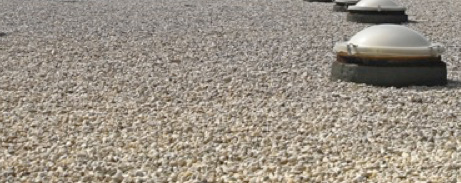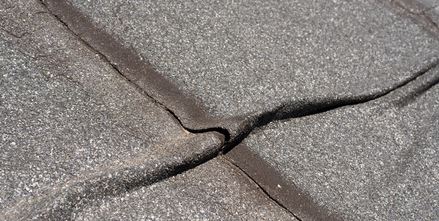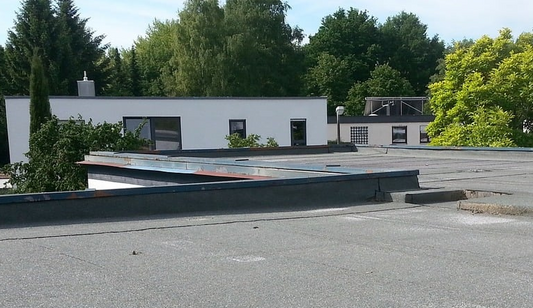What are the advantages of felt flat roofing?
Felt is a low-cost, lightweight roofing material that is easy to install and repair. It offers good waterproofing when installed correctly. Felt roofing is versatile and can be cut to fit any roof shape or size.
How long does felt flat roofing last?
The lifespan of a felt flat roof is typically 10-15 years with proper installation and maintenance. High-performance felt may last up to 20 years. Factors like climate, roof pitch, and quality of installation affect longevity.
What is the best method for installing felt flat roofing?
The best installation method depends on the specific felt product. Common methods include torch-on application, where heat is used to adhere the felt, and self-adhesive "peel and stick" felt. Professional installation by experienced roofers is recommended for best results.
How do you maintain a felt flat roof?
Regular maintenance includes clearing debris, checking for damage, and repairing any issues promptly. Applying a UV-resistant coating every few years can extend the roof's life. Have the roof professionally inspected annually.
What are common problems with felt flat roofs?
Common issues include blistering, splitting, and leaking at seams or around fixtures. Ponding water can degrade the felt. Poor installation or lack of maintenance can lead to premature failure.
What is the environmental impact of bitumen-based products?
Bitumen production and use contribute to air pollution, greenhouse gas emissions, and potential water contamination. However, felt is relatively long-lasting and can often be recycled at end-of-life, mitigating some environmental impact compared to shorter-lived roof systems that require frequent replacement.
How effective is cold applied versus torch-on felt?
Both methods can provide effective waterproofing when installed correctly. Torch-on felt may offer somewhat better adhesion and durability. However, cold-applied felt is safer to install and avoids risks associated with open flames.
How is torch-on felt applied?
Torch-on felt is heated with a gas torch as it is unrolled, melting the bitumen to create a strong bond with the roof surface. The seams are also heated and sealed. Proper safety precautions are essential.
How does the lifespan and performance of roofing felt compare to other flat roof materials like EPDM rubber or GRP fibreglass?
EPDM and fibreglass flat roofs typically last longer than traditional felt, with lifespans of 20-50 years. They are also more puncture and weather-resistant. However, they have higher material and installation costs compared to felt.
Can a felt roof be repaired if damaged or is full replacement usually necessary?
Small areas of damage can often be patched with roofing cement, felt patches, or sealant. However, if the felt is near the end of its lifespan or damage is extensive, complete replacement is usually recommended.
What are some signs that a felt flat roof needs to be replaced?
Signs include persistent leaks, extensive blistering or cracking, large splits or tears, and significant moss or vegetation growth. If the felt is more than 15-20 years old, replacement should be considered even without major visible damage.
Are there any environmentally friendly or sustainable alternatives to traditional bitumen-based roofing felt?
Some modern felt systems use recycled materials like rubber or plastic in the bitumen mix. There are also felt-like products made from organic fibres and vegetable-based oils. Green roofs with vegetation can be an eco-friendly alternative.
What is the typical cost per square metre to have a felt flat roof professionally installed in the UK?
Costs vary, but an average price range is £50 - £80 per square metre for traditional felt, including materials and labour. High-performance felt may cost £80 - £100+ per square metre installed. Larger roofs tend to have lower per-square-meter prices.
What are the main disadvantages of felt flat roofing?
- Shorter lifespan - typically lasting only 10-15 years, with high-performance felt lasting up to 20-25 years
- Prone to weather damage - Felt can become soft and warp in hot sun, and turn brittle and weak in cold winter weather, leading to cracks and splits
- Requires frequent maintenance: To prevent leaks and damage, felt roofs need to be inspected and maintained regularly to repair any blistering, cracks, or slumping that develops.
- Prone to leaks - If felt is not installed properly with adequate overlaps and sealing at seams and edges, it is susceptible to leaking
- Poor puncture resistance - Sharp objects, foot traffic, and fallen branches can puncture the felt, allowing water ingress.
How does the lifespan of modern felt roofing compare to older versions?
Modern felt roofing typically lasts longer than older versions due to advancements in materials and installation methods. Modern torch-on felts installed by professionals can reach 30+ years with regular care, a significant improvement over traditional felt roofing. In contrast, older felt on flat shed roofs may last only 10-15 years due to lower-quality materials and greater exposure to the elements.
Why put gravel stones on a flat roof ?
Gravel stones are placed on flat roofs primarily to protect the underlying roofing materials and to secure the roof covering. In built-up roofs, gravel acts as a shield to protect the roof from ultraviolet (UV) rays, hail, foot traffic, and physical damage, thereby preventing cracking, blistering, and degradation of the roof membrane which could potentially lead to leaks. For single-ply flat roofs, gravel serves as ballast, weighing down the roofing membrane to prevent it from being displaced by wind while also providing a stable surface for maintenance foot traffic.
In addition to protection and securing the roof, gravel on flat roofs improves thermal performance by reflecting sunlight and helping regulate rooftop temperatures, thus enhancing energy efficiency. It also aids drainage by preventing water pooling and helps prevent natural debris from clogging drains. Furthermore, gravel increases fire resistance due to its non-combustible nature and extends the lifespan and durability of the roof system overall, making it a cost-effective, practical, and resilient roofing solution.
The best type of gravel to put on a flat roof is determined by a range of factors, from the type of covering and prevailing climate through to aesthetic choices.




